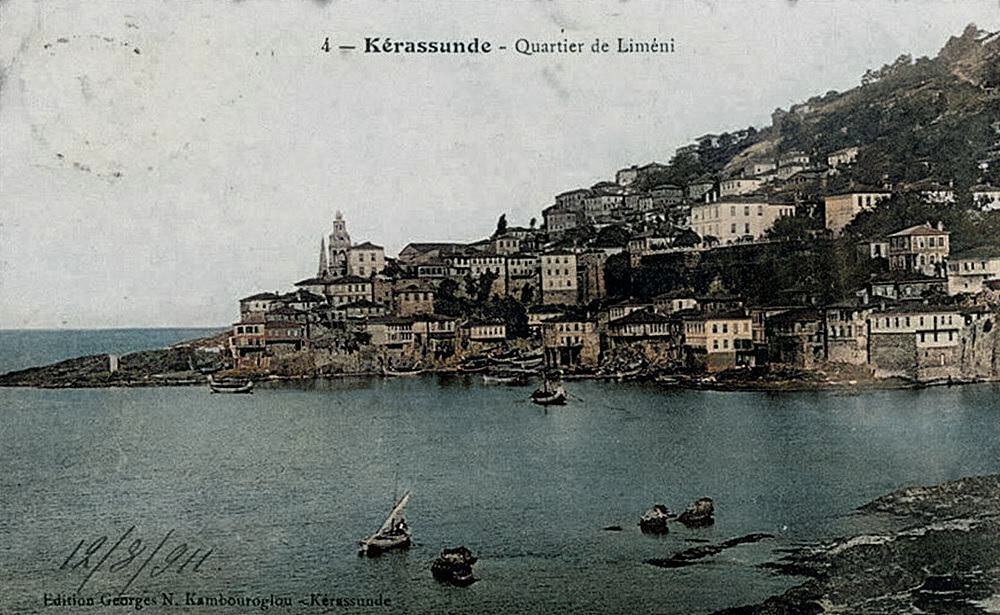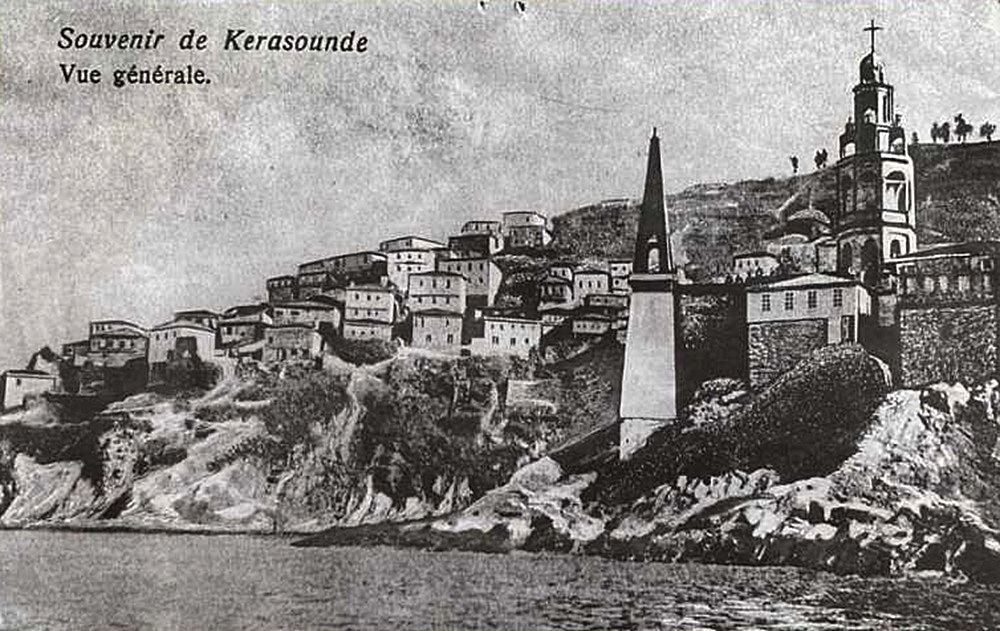Postcard of Giresun. Kerassunde. Quartier de Limeni. (Limeni district). Edition: Georges N. Kambouroglou. Colourised
Kerasunda (historically Kerasus, today Giresun) like most of the Greek settlements along the Pontic coastline was established by Sinope. It was founded around the 6th century BC. In 183 BC it was renamed Pharnacia in honor of Pharnaces the King of Pontus who took Kerasunda after capturing Sinope. It fell to Pompey in 64 BC but was not incorporated in the Roman Empire until a century later. The city struck it's own coins.
The often told story that Kerasunda was named after the cherry (Gr: Kerasi) is quite possibly a myth. Kerasunda was and is a major Pontic centre of a highly important hazelnut trade. At the turn of the 7th and 8th centuries, there was an imperial office of commerce in Kerasunda which was associated with Trebizond and Lazia.
A list of the former Greek settlements of Giresun
The victory of Alexios II over the Turkmen ‘Koustoganes" at Kerasus in September 1301 was vitally important. If Kerasunda had fallen in 1301, the Turkmen would have obtained major access to the sea and the days of the Empire of Trebizond would have been numbered. After 1301, Alexios II built a fortress which overlooks the sea.
Postcard of Giresun. To the far right of the postcard is the church of the Transfiguration of Jesus (Μεταμόρφωση του Σωτήρως) and to the left of this is the obelisk of Captain Yorghi Pasha (Konstantinidis) the mayor of Giresun from 1889-1906.
Situated 4.2km east-northeast of Kerasunda is a fortified island called Ares (Αρητιας νήσος or Αρεώνησος), today Giresun Adasi (island). It was here according to Apollonius of Rhodes that the Argonauts encountered both the Amazons and a flock of vicious birds. The Greeks of the island held out against the Ottomans for 7 years after the fall of Trebzind in 1461. With the start of Ottoman rule, many Greeks fled to nearby Russia while many fled to the mountainous interior of Asia Minor.
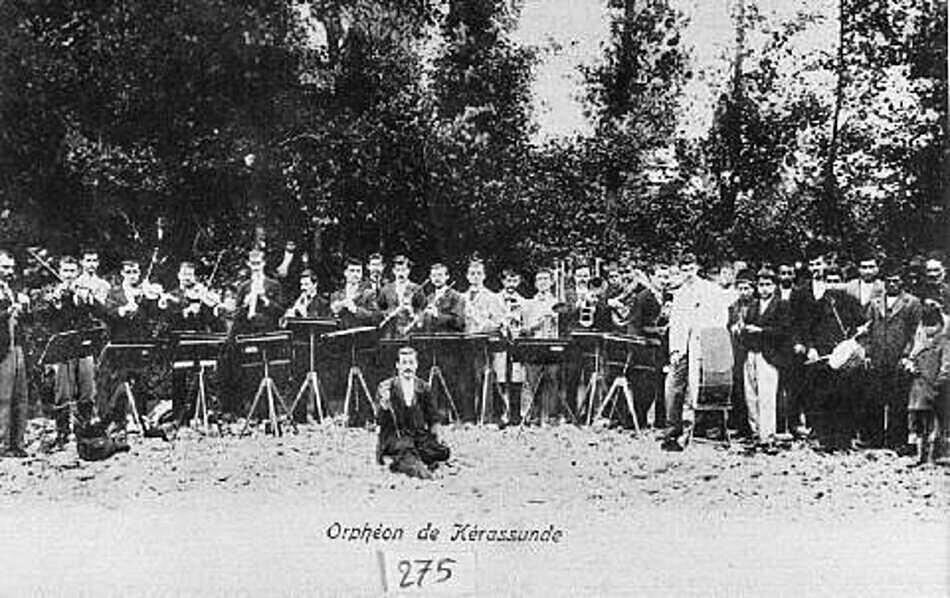
The Kerasunta (Giresun) Philharmonic Orhestra performed at neighbouring towns on a regular basis and also at events during Christmas, New Year's, Easter and school performances. Photo c 1907.
Persecution
In 1764 during the Derebey Wars between two Turks, the Greek population was completely devastated with the loss of almost all it's churches, the ransacking of houses and shops, and imprisonment of many citizens. In 1915 the Armenians were rounded up and massacred, while in 1919 Kemalist forces turned their attention to the Greeks and assigned Topal Osman the task of persecuting the Greeks of the region.
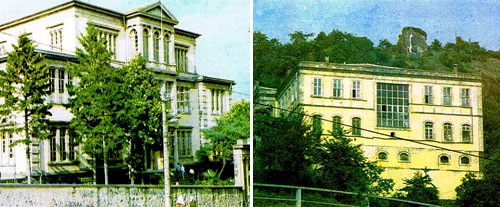
Left: Kerasunda High School. Right: Kerasunda Town Hall
Areas and Districts of Kerasunda
Kerasunda is one of the 37 regions of Pontus. The Centre of Asia Minor Studies says that Kerasunda was comprised of 10 precints. They were:
- Kerasunda, Kepekklisias, Kouskayias. Tsagrak, Tsal, Aptal, Kesap, Kirik, Koulakayias, Poulantsak(is).
The Greek districts of Kerasunda (the town) were as follows:
- Kokkari, Saitas, Limeni, Tsinarlar, Beyuk Paktse, Tsironi, Yeni Gkiol, Ypsilon, Fanari.
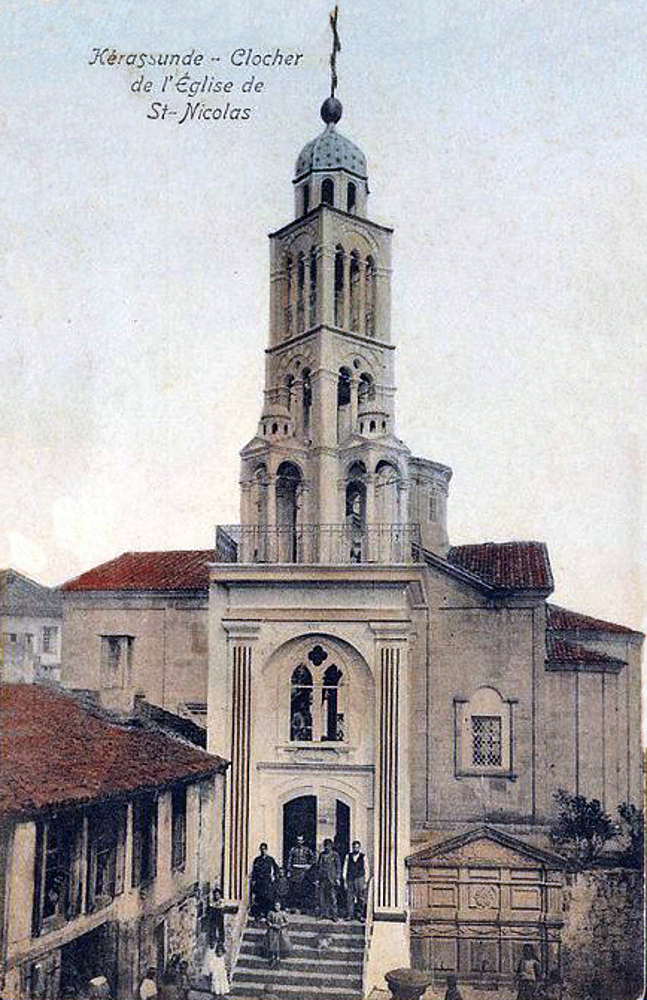 |
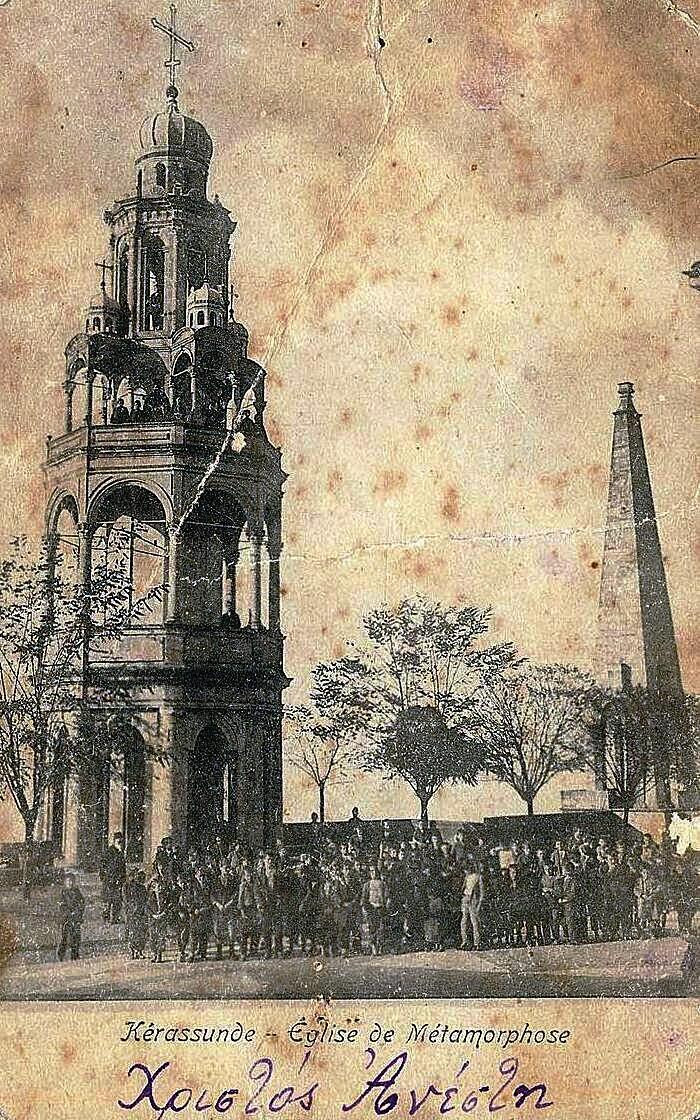 |
Left: The belltower of the church of Saint Nicholas (Kerasunde - Clocher de l'Eglise St. Nicolas), Giresun.
Right: The church of the Transfiguration of the Saviour (Metamorphosis tou Sotiros). Source
Population
In 1913, Kerasunda had a population of 30,000 which comprised 17,000 Greeks, 3,000 Armenians, 7,000 Turks and 3,000 others. The most notable Greek of Gireun was Captain Yorghi Pasha.
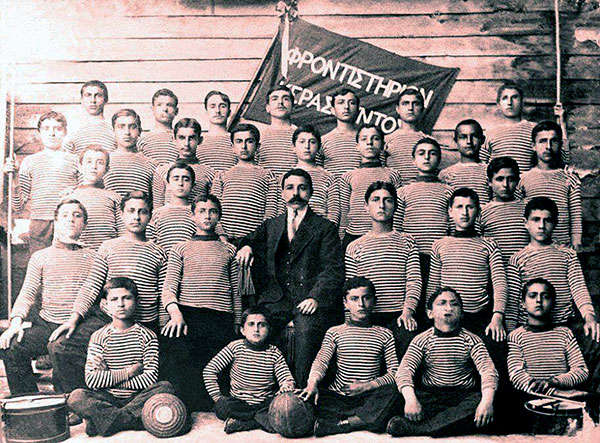
Students of the Kerasunta Greek Tuition Center
References:
The Byzantine Monuments and Topgraphy of the Pontos by A.Bryer and D.Winfield.
The Encyclopaedia of Pontian Hellenism.
A list of the Greek settlements of Giresun
